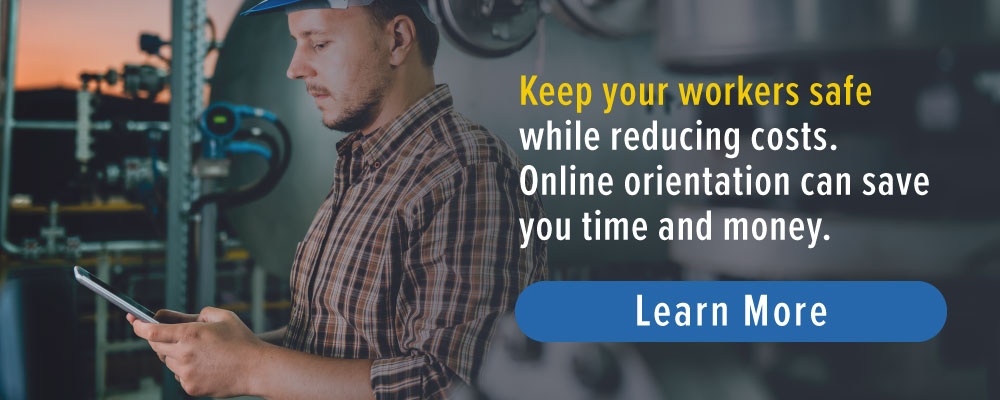The Importance of Ergonomics in Office Safety
Why you should take it seriously- The Institute of Medicine estimates the economic burden of Workplace Musculoskeletal Disorders (MSD’s – as measured by compensation costs, lost wages and lost productivity – at between $45 and $54 billion annually.
- The Bureau of Labor Statistics studies shows that one in three of all occupational injuries and illnesses are due to overexertion or repetitive motion.
- Focusing on Increased ergonomics oriented awareness, training, and hazard reduction will reduce injuries, lost work time, and associated costs.
- Get employees to demonstrate the actions that involve repetition or difficult and static positions.
- Try to indicate how these might be avoided or worked around
- Look for employees’ suggestions as to how to improve the situation, perhaps with different furniture or equipment to improve office safety
Stress and Office Safety
 Workplace stress is a real problem. At some point, nearly everyone complains about being stressed or feeling anxious. Stress has been shown to have serious medical implications with it being linked as a contributing factor to various ailments such as heart problems, Alzheimer’s disease, and Diabetes. As the health implications of stress have become clearer so has its impact on companies and why it’s an important aspect of office safety. Why you should take it seriously
Workplace stress is a real problem. At some point, nearly everyone complains about being stressed or feeling anxious. Stress has been shown to have serious medical implications with it being linked as a contributing factor to various ailments such as heart problems, Alzheimer’s disease, and Diabetes. As the health implications of stress have become clearer so has its impact on companies and why it’s an important aspect of office safety. Why you should take it seriously- Stress results in absenteeism, poor work performance, and additional healthcare costs.
- 25%-40% of workers will face high levels of workplace stress at some point during their work lives.
- The average amount of time taken by employees when they are experiencing stress-related problems is 4 working weeks.
- Stomach upset
- Migraine or headaches
- Sleep difficulties
- Lack of focus or attention
- Hypertension
- Depression
Housekeeping
Office workers should show good housekeeping practices in work, just because it shows pride in their work but also because it helps prevent injuries. Why you should take it seriously:- Poor housekeeping can lead to many forms of food poisoning
- Poor housekeeping generally indicates a lack of safety culture
- Ensuring good housekeeping practices makes employees aware of hazards.
- Fires can start from lack of housekeeping to do with paper, wood, flammable materials and so on that are not properly stored or removed
- Wet floors or slippy ground can often lead to slips
- All hallways and passageways and all worksites should be kept free from unnecessary materials as they can lead to trips and falls
- Sharp objects or edges can easily result in lacerations and punctures
- Tools are a common form of injury in the workplace and poor housekeeping around storing these items only contributes to the problem
- Falling objects also injury many workers every year and should be protected against with simple housekeeping rules around unguarded heights
Hand safety
 Personal Protective Equipment (PPE) is not just for on-site workers in heavy industry. Gloves and other hand protectors are key elements of the PPE arsenal. Clearly, employers not only need to provide the correct gloves for the job in hand but also need to train staff to recognize the correct type that they need. Why not get employees to conduct their own hazard assessment? Involving them in this hazard assessment can be an effective training technique and boost office safety. Some common hand injuries include:
Personal Protective Equipment (PPE) is not just for on-site workers in heavy industry. Gloves and other hand protectors are key elements of the PPE arsenal. Clearly, employers not only need to provide the correct gloves for the job in hand but also need to train staff to recognize the correct type that they need. Why not get employees to conduct their own hazard assessment? Involving them in this hazard assessment can be an effective training technique and boost office safety. Some common hand injuries include:- Cuts, lacerations, punctures, and even amputations
- Abrasions
- Broken fingers or bones
- Dermatitis from contact with certain chemicals
- Burns from touching very hot objects
- Chemical burns
- Provision of the correct PPE for employees
- Provision of comprehensive training for employees to identify hazards and how to use PPE to counter those hazards
Back safety
 With over 1 million back injuries in the US workplace each year, prevention should be a major focus of your safety training – and not just for workers in manual-handling jobs. While it’s true that a leading cause of back injuries is overexertion it’s not the only cause. Other major reasons for back pain are related to long-term effects of doing a job, including:
With over 1 million back injuries in the US workplace each year, prevention should be a major focus of your safety training – and not just for workers in manual-handling jobs. While it’s true that a leading cause of back injuries is overexertion it’s not the only cause. Other major reasons for back pain are related to long-term effects of doing a job, including:- Heavy physical work of any kind
- Awkward postures required to do a job
- “Static posture”—being required to sit in one position for an extended period of time
- 1 in every 4 compensation payments made to workers is as a result of back pain.
- In 2013 there were nearly 300,000 back injuries that led to time taken off. Of these nearly 90% were in material-handling jobs.
- Back injuries are the leading cause of disability for workers younger than 45.
